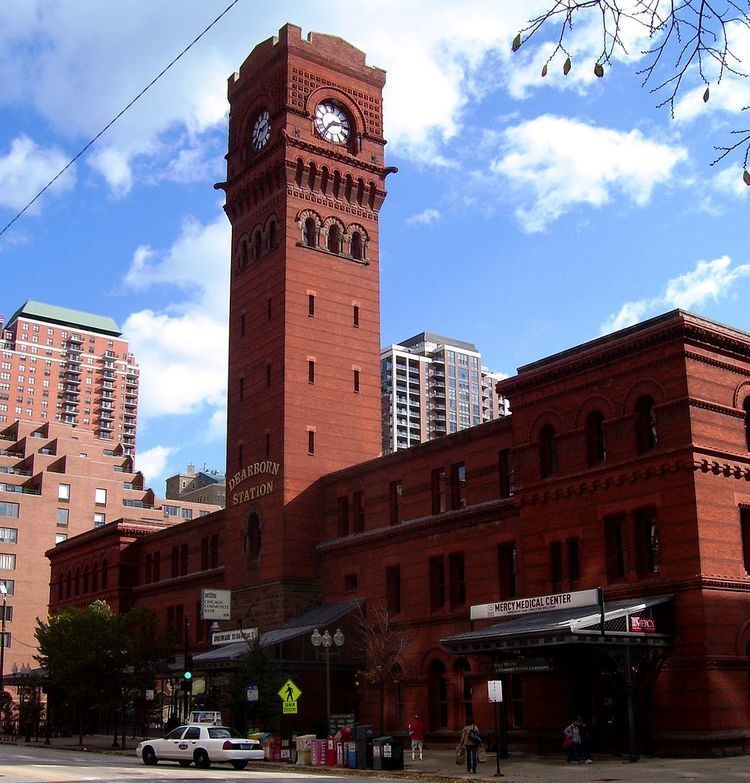NRHP Reference # 76000688 Opened 1883 Added to NRHP 26 March 1976 | Designated CL March 2, 1982 Phone +1 312-554-8100 | |
 | ||
Built 1883; 134 years ago (1883) Hours Closed now Saturday9AM–5PMSunday9AM–5PMMonday(Casimir Pulaski Day)9AM–5PMHours might differTuesday9AM–5PMWednesday9AM–5PMThursday9AM–5PMFriday9AM–5PM Similar LaSalle Street Station, South Dearborn Street‑Pri, Chicago Union Station, Michigan Avenue Bridge, Fisher Building | ||
Dearborn Station (also referred to as Polk Street Station) was the oldest of the six intercity train stations serving downtown Chicago, Illinois. It currently serves as office and retail space. Located at Dearborn and Polk Streets, the station was owned by the Chicago & Western Indiana Railroad, which itself was owned by the companies operating over its line.
Contents
Dearborn station the fortune band
Description and history
The Romanesque Revival structure, designed by Cyrus L. W. Eidlitz, opened May 8, 1885 at a cost of $400 to $500 thousand (equivalent to $10.7 to $13.3 million in 2017). The three-story building's exterior walls and twelve-story clock tower were composed of pink granite and red pressed brick topped by a number of steeply-pitched roofs. Modifications to the structure following a fire in 1922 included eliminating the original pitched roof profile. Behind the head house were the train platforms, shielded by a large train shed. Inside the station were ticket counters, waiting rooms, and Fred Harvey Company restaurants.
Amtrak (the National Railroad Passenger Corporation) chose to consolidate its Chicago operations at the Union Station. The final intercity passenger train to depart Dearborn Station was the Grand Trunk Western Railroad's International Limited, which departed on April 30, 1971. The arrival of the Atchison, Topeka & Santa Fe Railway's San Francisco Chief and Grand Canyon from California on May 2 brought intercity operations at Dearborn to a close. The Norfolk & Western Railway's Orland Park commuter service, the Orland Park Cannonball, continued to use a platform at Dearborn until 1976.
By 1976, Dearborn Station's train shed was demolished and tracks were removed; the head house building was retained. The train station stood abandoned into the mid-1980s when it was converted to retail and office space. The former rail yards were converted for use as Dearborn Park.
Services
As of 1920 the Dearborn Station served as a terminal for 25 railroads, serving 17,000 passengers daily on 122 trains. Some of the railroad that served the station include the following, with some of the more well-known name trains listed:
The following commuter rail services also operated from the station:
In popular culture
In blues musician Henry Thomas' 1927 song "Railroadin' Some", the "Polk Street Depot" is the next to last stop on a journey that begins in Fort Worth, Texas, and ends in Chicago.
Dearborn Station is mentioned multiple times in the 1974 "Adam's Ribs" episode of M*A*S*M*A*S*H, in which Hawkeye Pierce craves the barbecued ribs from a fictional restaurant adjacent to the station, but can't recall the name. He calls the station master from South Korea to get the restaurant's name and phone number.
"Dearborn Station" is a song by the rock band Fortune that was released in 1985.
